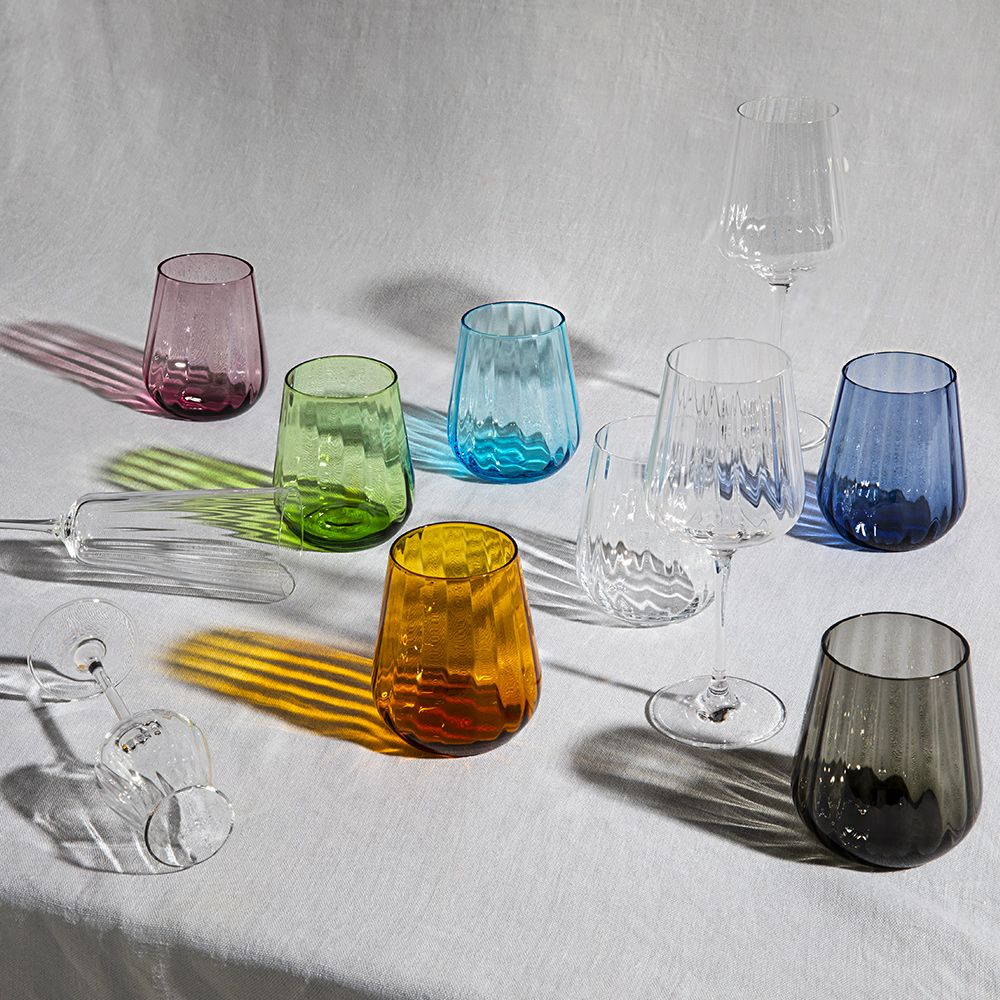The Crystal Factory
Since its beginning, Livellara has always faced the contemporary moment by yielding to the cultural, social, and industrial transformations of our times. It has done so with in a mixture of techniques, alchemy, art, manual skills, ancient wisdom, recent discoveries, planning and professionalism. Although hazarding technical reinterpretations, it has done so by strictly respecting, the nature of the material, its characteristics, its dignity.
This way, works of extraordinary balance between knowledge and invention, between experience and freshness, between design methodology and imagination play a role in history. Exceptional for their respect for a fascinating and difficult material that is ancient yet always lively, these works are never casual. Instead, they are always generous, born transparent, lightweight, and luminous, guided without violence, by the hand of man.

Glass, crystal, a great love, a crazy, dragging, possessive, exhausting, terrible love for this extraordinary, ancient, lively, sensual, and decisive material, which is unforgiving. Yet it fascinates and binds like the beautiful sorceresses and like the wicked witches who drank at the fountain of youth. I was born in Venice, a city whose history is closely intertwined with the history of glass. Growing up in a relationship between ancient techniques and wisdom, on the one hand, and contemporary creativity on the other, I found myself, almost naturally, putting pencil to glass while still very young. This experience, which has grown to become a passion, a love, and respect has remained, over these thirty years, as a constant physical presence in my work that has even led me to probe other fields and a great many other materials. Crystal and respect. The legend of the adoration of glass. Legend has it that the enchantment of glass, according to Pliny the Elder, started near the mouth of the Belus River, from the fire of Phoenician sailors who landed with their cargo of natron on the siliceous sand of the river bank. A legendary origin which, however, accentuates the alchemical note of this material that is born casually from fire and earth, in a lonely place, almost like the spirits of the woods, earth, and rivers.
Since then, glass and crystal have always been a search for balance between the earth they originate from, the fire that turns them into a liquid mass, and the air that swells them, giving them their shape. Almost without realizing it, we have arrived at the four basic elements of nature: earth, fire, water, and air, which are all present and which, with their balance, constitute the enormous fascination of this material. In this spirit and logic, today, Livellara leads me, joining our stories, to visit and walk that thin line between the more typically Murano glass and “its” lead crystal, generated by fire, fluid as water, strong as earth and transparent as air, in the serene search for a new design in the balance of natural elements.
Brands distributed
History and Material
The Livellara company was founded in 1923 in Gorizia. It was just after World War I ended and profound transformations of society were taking place. Livellara was founded as a trading company, with business and interest in household goods, with porcelain as its core business, which would always remain a great love, and glass, imported from Czechoslovakia. The firm thus established itself in the Italian market with a solemn style of glassware that still distinguishes it to this day.
With the advent of autocratic principles in Italy, just before World War II, Livellara found itself having to rely on domestic supply sources. It thus became a customer of Murano Conterie e Cristallerie for an exclusive production. At the end of the war, with the economy starting to pick up, Livellara had a hard time resuming business relations with glass factories in Czechoslovakia, which had been depleted of much of its glass and in the midst of a crisis. The Livellara Company, realizing that it was losing a large chunk of its supplies, first rented, and then immediately purchased Conterie Muranesi.
The year 1946 was when what was to become the company’s design philosophy was established and encoded: a production of crystal that was “different” from traditional English and Bohemian crystal, and a technique crafted by man, not by machine. It was going to make a lightweight, airy, intricate, thick, with subtle thicknesses, crystal that was affected, and would always be affected, by a working technique much closer to the Murano tradition than to the known logic of crystal. Its crystal was ultimately based on a philosophy, technique, and tradition that was decidedly unique. At the conclusion of the Murano period which, as we have said, would mark the firm’s production technique forever, in 1952, Livellara moved to Milan.
The first Milanese headquarters, in Viale Certosa, carried on business there until 1964. That year, Livellara moved to its current location, in Via Bovisasca, when it purchased the facilities of a former oil factory, Balestrini. And so, it moved, with administrative headquarters, warehouse, ovens, tempera, and master glassmakers to a very interesting building, a witness to what, today, we can call industrial archeology, the result of a culture and an era that takes us back to the firm’s origins.
To us it is important to emphasize that, by virtue of its capabilities, its rigorous selection of tableware, and the very high standard of quality that follows, in the field of prestigious tableware production, Livellara is at the top.








